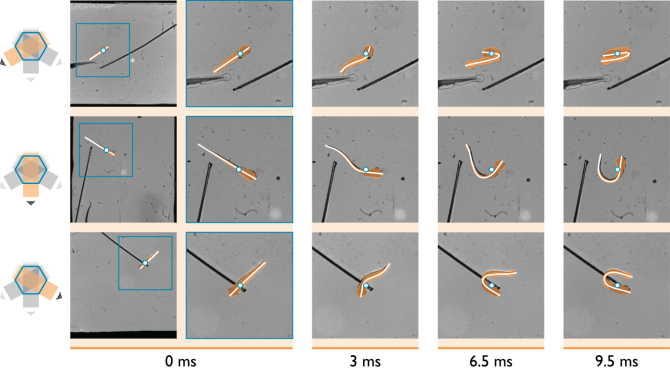PhD project Cees Voesenek
We study the mechanism behind larval zebrafish swimming and manoeuvring.
PI: Johan van Leeuwen
Zebrafish larvae are a highly interesting subject for research into the fundamental mechanics of swimming. They develop very quickly: they make escape manoeuvres only 2 days after being fertilised and beat their tails 100 times per second a few days after. We analyse the internal and external mechanics of swimming in the first two weeks of development using a range of experimental and computational techniques: 3D automated visual tracking from high-speed video, numerical modelling of fluid and muscles, X-ray tomography and light sheet microscopy of muscle architecture, a.o. Our research will shed light on the mechanics of swimming in larval zebrafish, and fish in general.

Our collaborators are Prof. Hao Liu and Dr. Gen Li (Chiba University, Japan), Prof. Ulrike Müller (California State University, Fresno, USA), Prof. GertJan van Heijst (TU Eindhoven, Netherlands).
The work is financially supported by ALW/NWO grant ALW824.15.001.

